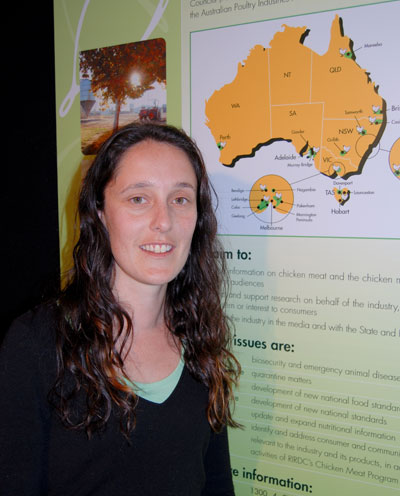A Poultry CRC researcher based at the Australian Centre for Poultry Immunogenomics is using emerging biotechnologies to detect avian influenza across a range of bird species.
Viral diseases such as avian influenza infect the cells of a bird and, using the machinery of the cell, create multiple copies of the virus which are set free as the cell bursts and dies. To do this, the virus takes control of the cells’ genes and alters the way in which those genes are expressed. That is, the virus causes more of some proteins, and less of others, to be manufactured by the cell.
At the Australian Centre for Poultry Immunogenomics, established by the Australian Poultry CRC at CSIRO’s Australian Animal Health Laboratory, microarray technology is used to detect the altered expressions of these genes. The microarray is a device on which a large number of sensors which detect biological molecules (biosensors) are laid out at specific locations. The biosensors fluoresce, or emit an electrical charge, when exposed to a target protein. Examining the patterns created as the biosensors react to different proteins in a biological sample permits the evaluation of protein expression and therefore the expression level of genes in the sample.
As the entire hereditary or genetic material of the chicken was sequenced in 2003, it is now possible to adapt microarray technology to investigate gene expression in other bird species. According to Dr Tamsyn Crowley, a Post Doctorate Fellow at CSIRO Livestock Industries, “We were able to distinguish ducks that were infected with avian influenza from uninfected ducks using this microarray platform. The platform enables a small amount of genomic information to be used to study the immune response in a range of avian species.”


